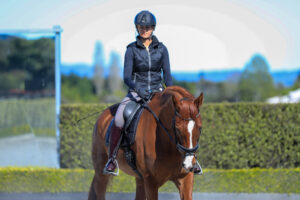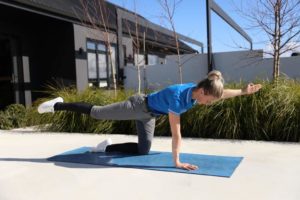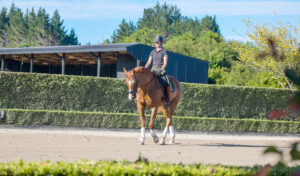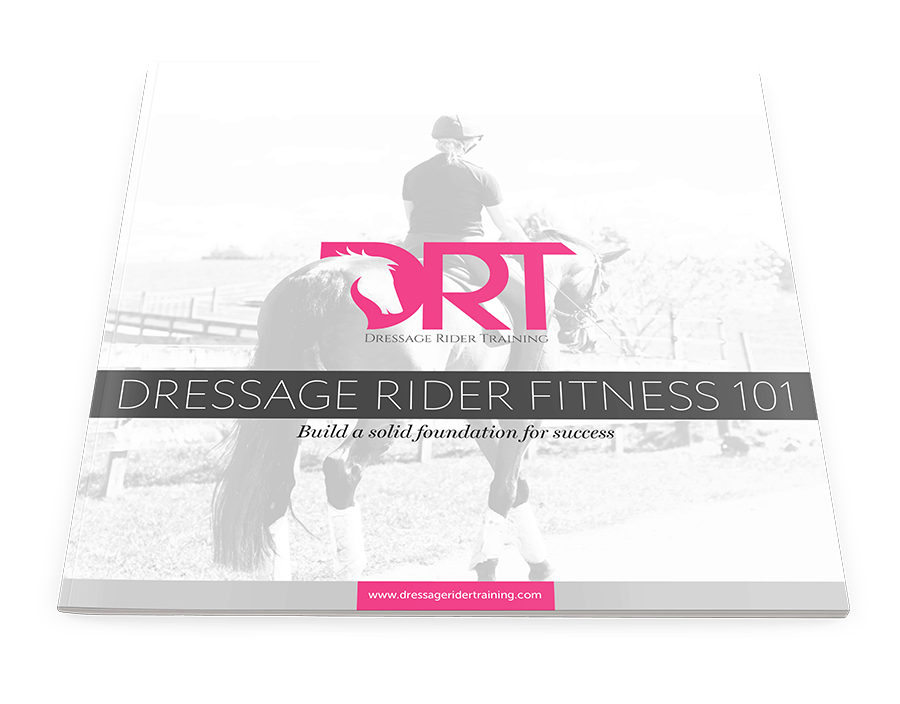Learn about your deep six and why they matter for dressage
Discover your deep six muscles and why they are important to understand as riders.
This small but very mighty group of lateral rotator muscles move our hip. Individually, they are quite small, but together, they form a powerful unit.
They play an important role in the saddle as a group of muscles. While each muscle name may seem incredibly foreign, the group working together is important for your position and biomechanics in the saddle.
As a group of muscles, the ‘deep six’ lateral rotator muscles are often discussed together because they have a similar primary action and generally function together.
These muscles are important for understanding pelvic movement and thigh position in the saddle. They contribute to various hip actions and can affect your thigh and hip alignment in the saddle.
While new research is always coming out about their exact function, these muscles largely act to rotate the femur laterally, and they provide stability to the ball and socket joint of the hip.
What muscles are included in this group?
- Piriformis
- Gemellus superior
- Gemellus inferior
- Obturator internus
- Obturator externus
- Quadratus femoris
How do the deep six lateral rotators work in the saddle
Deep hip rotator muscles are essential for movement and stability in your hips, pelvis, and upper leg.
All six work as a group to laterally rotate the hip, making the toes point away from the midline.
Each side may be different because we have two hips involved. This means your most dominant side may be stronger, and one side could be tighter and/or weaker than the other.
This matters because balanced seatbones help us feel what is happening with the horse. Unbalanced seatbones created by one side being tighter than the other affect what we feel.
It will also affect how your thigh lays against your horse, leading to your toe position down the chain.
Everything is connected.
We may blame the horse for a feeling of crookedness when, in fact, it is one of our thighs more laterally rotated than the other, affecting our ability to sit deep in both seat bones.
If you have one side tighter than the other, it will lift you out of the saddle more on that tight side and put more pressure on the opposite seatbone.
Please don’t stress if this is you because nobody is perfectly symmetrical.
We are all unique, and all have our tendencies.
And this is a really common issue because we all have one side that is more dominant than the other. Just watch how you stand and what leg you naturally balance more on.
The key is figuring out yours and working on yourself so you are fully aware of your body’s ‘go tos’.
That way, you take ownership of what you are feeling in the saddle and have clarity about your feel.
When we understand our bodies better, we can become a softer, kinder rider for our horses and better understand what we are feeling in the saddle.
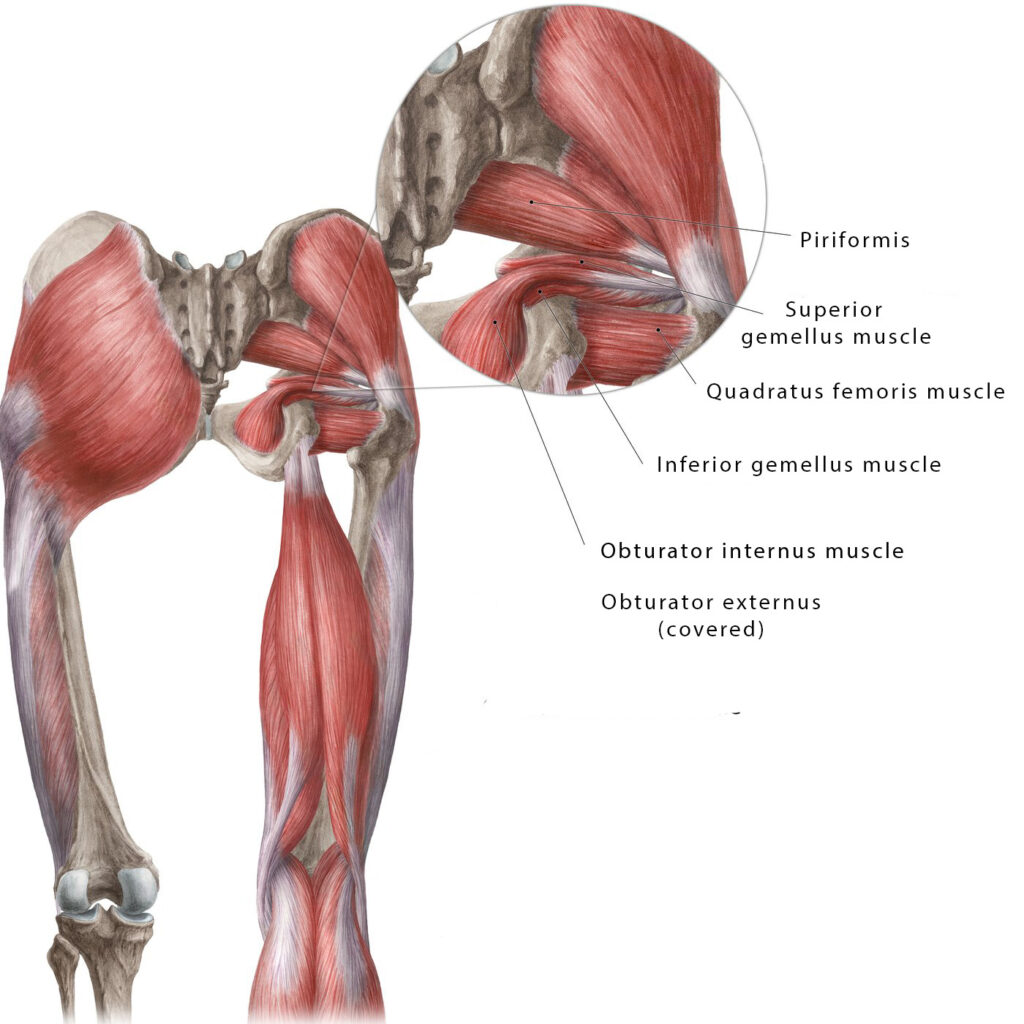
How do the deep six lateral rotators contribute to movement
One of the roles the deep six are responsible for is the control of movements through one leg. Think of walking or running where the weight is balanced through one leg only.
While the gluteal muscles are most commonly known for their role in hip movement and stability, the six deepest muscles, which are small but essential for hip rotation control, are often overlooked.
While they don’t work alone because the body works as an entire unit, there are always more muscles at play in every movement we do.
Also, don’t blame everything on your deep six because it is likely that muscles upstream and downstream are also affected by this imbalance.
Who started the imbalance?
You may never know, but try not to isolate and blame one muscle. The body is a system of systems, and everything is connected.
This is why working on your strength and suppleness through your whole body is important for your rider biomechanics.
However, learning and understanding these deep six muscles and ensuring they are both strong and supple on both sides will improve your hip stability and enhance your ability to correctly use your seat in the saddle.
Here is a great video from Kenhub discribing the function of the piriformis, but equally too mentioning all deep six.
Eight stretches for your deep six muscles
When doing each stretch, I think the key is not to think you need to do the most extreme version. But instead, to create a similar feeling through each side.
We are after symmetry, so we have a symmetrical feeling in the saddle.
When we know we have this feeling off the horse, we can be true to our feelings we get in the saddle.
So, find which stretches are best for you; you can do all of them or the one that works best for you. Focus on getting an even feeling on each side and improving your overall symmetry and balance through your pelvis.
Everyone is different, and with over 21 different muscles around our hips, you will be stretching your deep six and other muscles with these stretches.
You may feel one stretch in particular hits the spot.
So, by doing these stretches, you will start to learn more about your body and understand what you are feeling and where your tightnesses are.
Seated Twist
It is great for getting into your piriformis, but because these muscles don’t work alone, it will target all of the deep six as well as your glutes.
Sitting down on the ground, have both seat bones on the floor.
Tuck in one leg towards your hips and wrap the other over. Turn your body towards your top knee and hug it with your arm.
Think of lifting up tall through your spine as you press down into your hand behind you onto the ground.
Feel this stretch in through your glutes. If this is too much with both legs bent, you can straighten your bottom leg out on the ground and continue the same stretch.
Hold for 30 seconds or up to 2 minutes and breathe deeply.
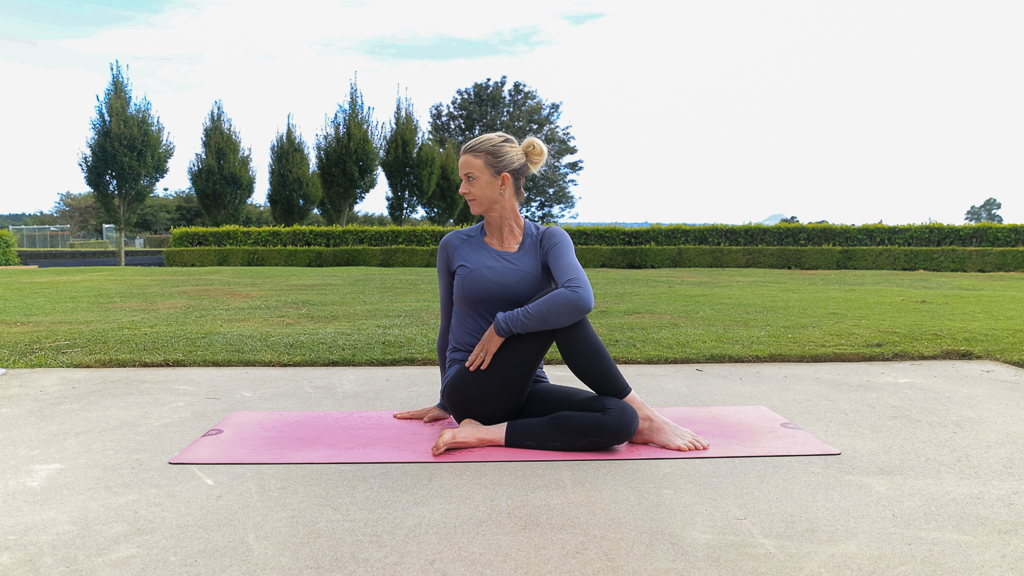
Pigeon Pose
The pigeon pose is great again for deeply stretching into this area. Both the glutes, deep six and hip flexors through the opposite side will release some tension.
Start on all fours.
Bring your one knee forward, lets start with your right and place it behind your right wrist.
Allow the shin to to sit perpendicularly in front of you.
Extend your left leg straight behind you. Aim to keep your hips squared as much as possible.
If your flexibility allows, lower your upper body toward the ground to deepen the stretch. And if too much, allow your left leg to bend in and stay more upright.
Hold for 30 seconds or up to 2 minutes and breathe deeply.

Keyhole Stretch
If either pigeon pose or standing figure four feels too challenging, a great alternative is a keyhole stretch.
Lie on your back, cross your right ankle over your left knee, and gently pull your left knee toward your chest.
If you can’t reach your shin, you can use a towel and thread it through and hold the towel instead.
This should create a stretch in the right glute.
Hold for 30 seconds or up to 2 minutes, and breathe deeply.
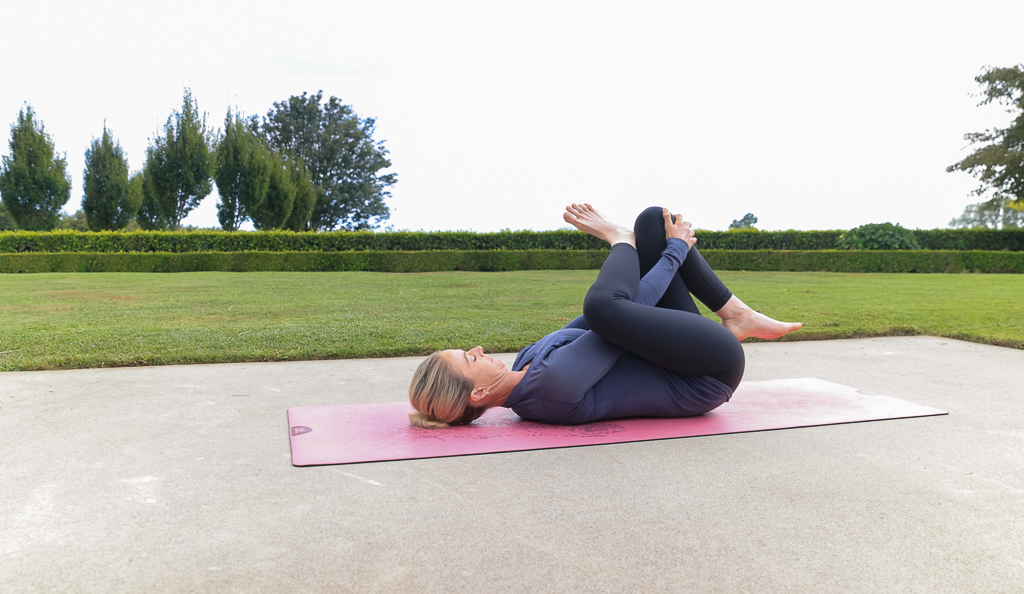
Supine Twist
Laying on your back, allow both knees to bend and let your right leg cross over your body and onto the ground.
Let both legs relax in this bent position and feel the stretch through your glutes and lower back.
To make the stretch more intense, you can place your hand on your knee and gently press down.
Hold for 30 seconds or up to 2 minutes, and breathe deeply.

Supine assisted ITB
This one is intense but great. It will get into your ITB, glutes, and deep-six.
Laying on your back, place a long towel or strap over your foot.
Then, lift your leg like you are stretching your hamstrings. Find the stretch first in your hamstrings, and protect your back by bracing your core and keeping your neutral spine.
Then, gently cross your foot over your centre line towards or near your opposite hip.
Anchor the stretch by having your free arm out to the side to help support and balance you.
Hold for 30 seconds or up to 2 minutes, and breathe deeply.
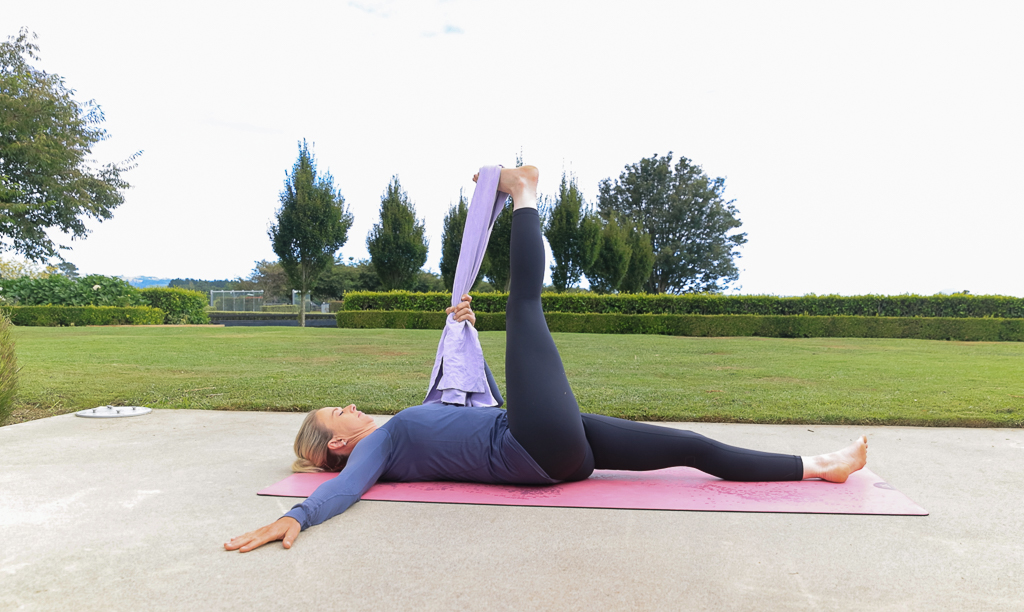
Supine-assisted ITB twist
A slight variation of the previous two stretches.
Laying on your back, allow both knees to bend and let your right leg cross over your body and onto the ground.
Wrap a towel or strap over your right foot and then gently straighten until you feel a stretch through your glutes.
The closer your leg is to 90 degrees in relation to your body, the more intense this will be. So start with your leg at 45 degrees or less and gradually built up.
To make the stretch more intense, you gradually bring your leg more into that 90 degree position.
Hold for 30 seconds or up to 2 minutes, and breathe deeply.
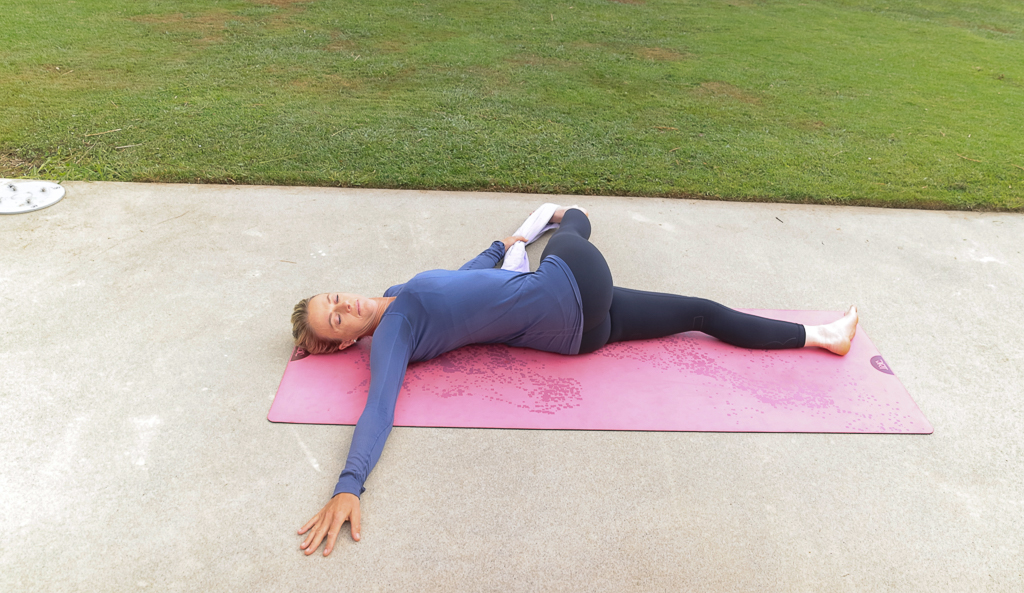
Triangle pose
Standing with your feet at a hip-width distance, imagine your feet are on railway lines versus a tight rope.
Step your right leg down that railway line, keeping that hip-width distance in the side-to-side plane.
Turn towards your right leg, let your left hand rest on your shin, ankle, or the ground, and let your right-hand reach high.
Feel the stretch target your glutes and your hamstrings as you turn.
Hold for 30 seconds or up to 2 minutes, and breathe deeply.
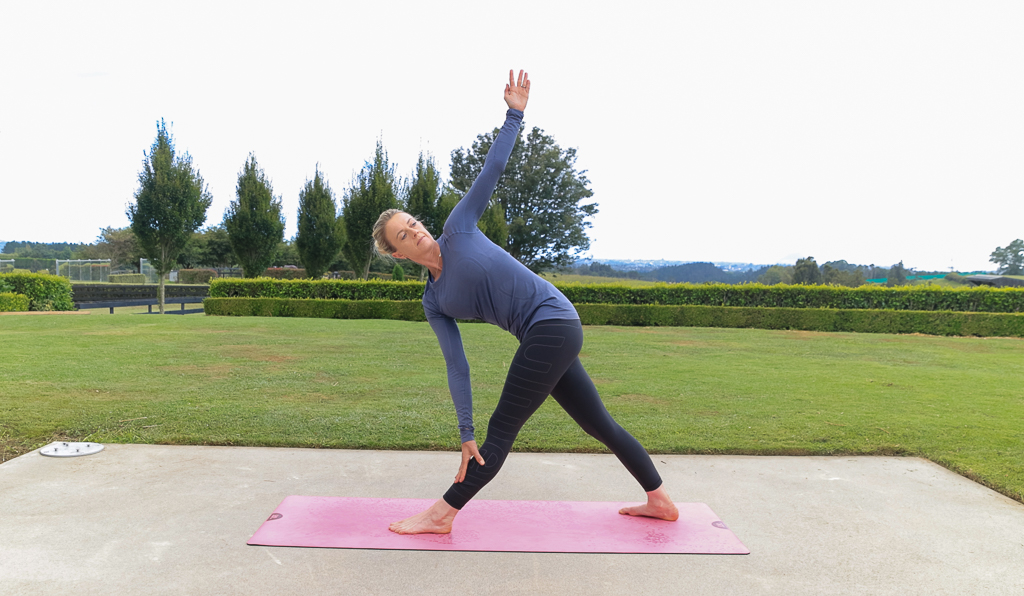
Standing Figure-Four Stretch
Standing tall, place your right foot over your left and keep your foot flexed.
Let your knee fall to the side, and then bend forward to find your balance and stretch through your glutes.
If you find it hard to balance, you can do this by using a kitchen table and holding the table while you stretch.
The more you bend down, the deeper the stretch will be.
Hold for 30 seconds or up to 2 minutes, and breathe deeply.

Find which one of these stretches you can do and keep at it consistently.
You don’t need to master them all; find what works for you and keep at it. Remember its about finding symmetry.
You don’t have to do the most extreme version of stretch, but instead, focus on creating balance through your body and get to know your tendencies.
Start with just small efforts, around 30 seconds, and let your body get used to the position and relax into it.
Then, over time, increase the duration up to around 2-minute holds. This is where research suggests it is optimal for creating change.
Want more help with your hip suppleness, we have create a 21 day program specific to riders to help you address just this.
Here is a snippet from the program and you can find all the information here about it.
Dressage Rider Training System
Dressage is all about you, the rider and the horse. It is a team sport, so we developed a training system for you as a rider.
It is designed to help you work on symmetry, balance, coordination and suppleness while OFF the horse.
With the aim that when you are riding, you can sit in good posture and control and be able to focus on your horse during that time when you are in the saddle.
To get started on your journey, take a look at our FREE Rider Fitness guide here and discover our system of training.
Learn the four elements that go into you as a dressage rider and how you can begin to develop them today.
Want more FREE articles to help you with your dressage rider training? Try these out.
The Corset Of Your Abdominals : Your TVA
8 Key Muscles Involved When We Ride
The Underestimated Power Of Strength Training For Riders
All anatomy images used under license from Kenhub GmbH. Illustrator: Nicola Smith.
More articles
Dressage Rider Training Program
Join other participants on our 12-week 'step-by-step' online rider
training program. Improve the 5 components of your riding.
Only available 3x per year.
see full details & register your interest

